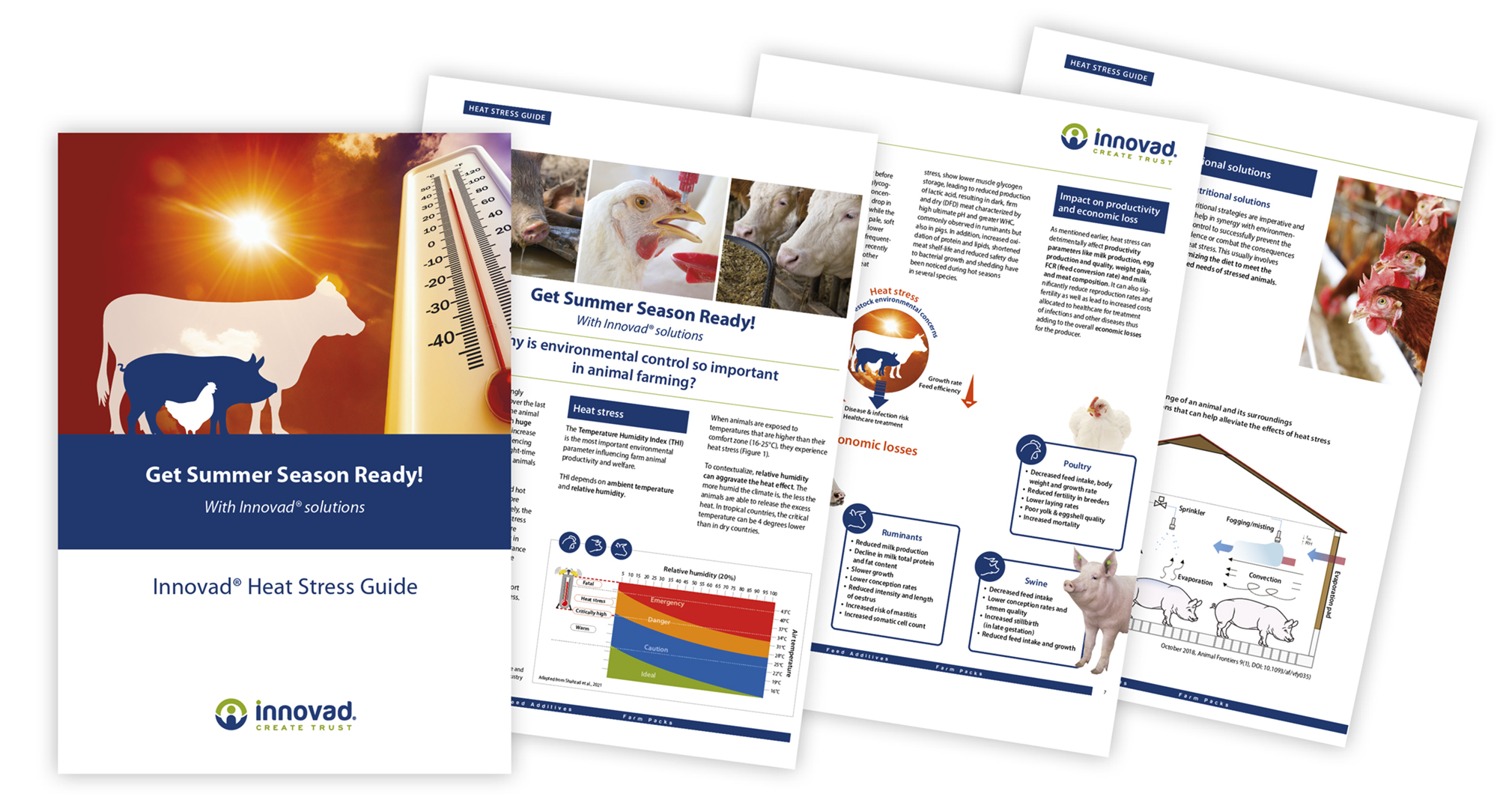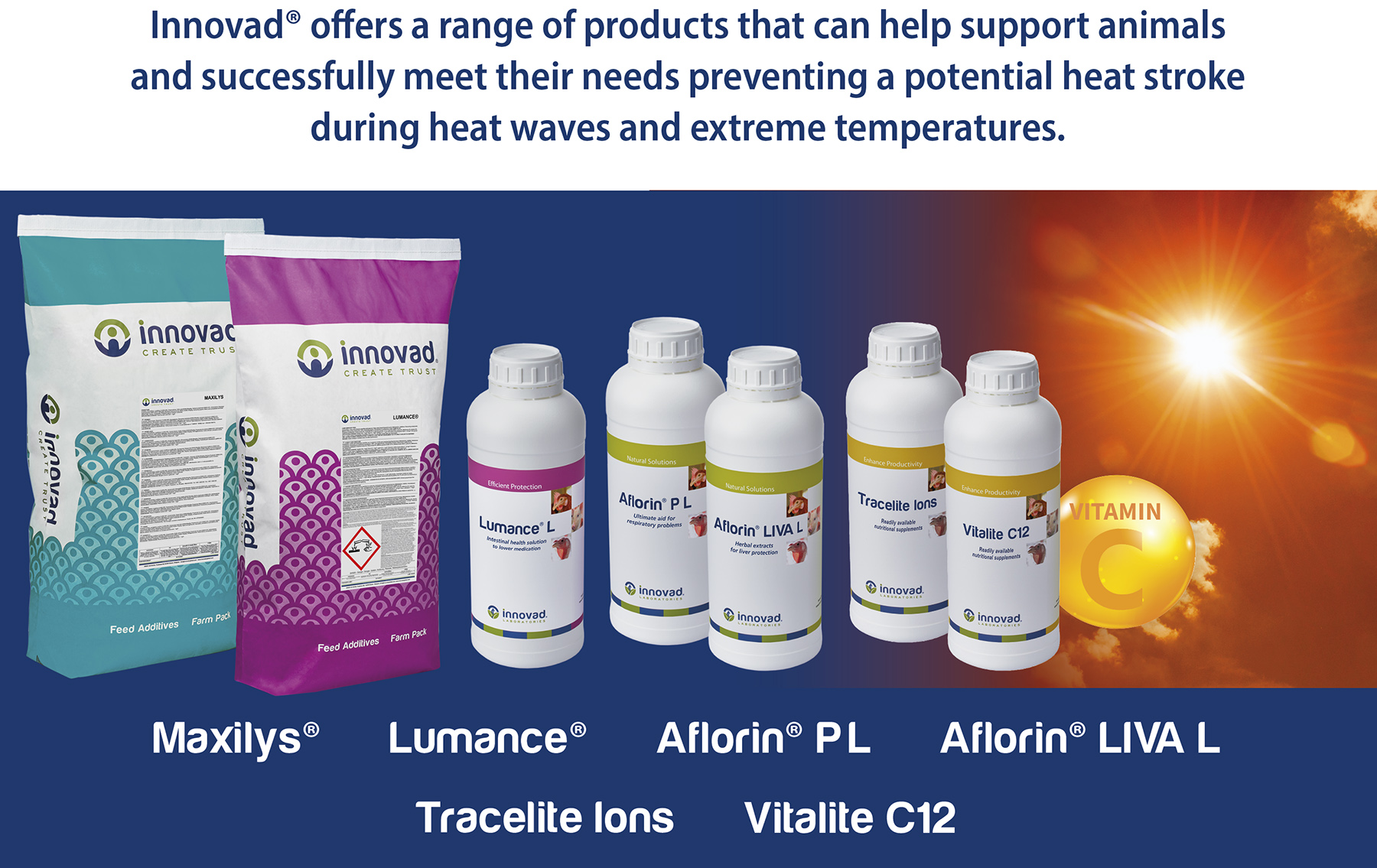Heat stress has increasingly become more severe over the last decade and it affects the animal farming industry globally with huge economic losses. Heat waves increase the chances of livestock experiencing heat stress, especially when night-time temperatures remain high, and animals are unable to cool off. Extreme temperatures - hot and cold - across the globe are getting more frequent and intense. Unfortunately, the damaging consequences of heat stress in animal production and health are expected to continue and intensify in the future, especially if thermotolerance and climate adaptation practices are not addressed. Thus, farm animals are seriously affected by extreme temperatures and need further support against the consequences of heat stress.
Heat stress can occur irrespective of animal species, immune status, and age. The fast metabolic rate, rapid growth, and high level of production make swine, poultry, and ruminants particularly susceptible to heat stress. Swine and poultry suffer from heat stress due to the absence of functional sweat glands and inability to release heat through sweat as well as due to the presence of skin insulation provided by the subcutaneous fat in swine and by feathers in poultry. In ruminants, the heat released during the process of feed fermentation in the rumen increases the metabolic heat production and affects their thermoregulatory mechanisms.

When do animals experience heat stress?
The Temperature Humidity Index (THI) is the most important environmental parameter influencing farm animal productivity and welfare. THI depends on ambient temperature and relative humidity. When animals are exposed to temperatures that are higher than their comfort zone (16-25°C), they experience heat stress.

To contextualize, relative humidity can aggravate the heat effect. The more humid the climate is, the less the animals are able to release the excess heat. In tropical countries, the critical temperature can be 4 degrees lower than in dry countries.
Symptoms of heat stress in livestock
One of the main symptoms of heat stress and an important component that negatively impacts productivity is reduced feed intake as the animals are trying to compensate for the excess heat by limiting internal heat production during digestive and metabolic processes. This is accompanied by excessive water intake and by redirection of energy to fuel processes of thermoregulation as opposed to growth and nutrient absorption.
Symptoms & Signs
- Fast panting
- Increased water intake
- Loss of appetite
- Hypersalivation
- Gastrointestinal disturbances like vomiting or diarrhoea
- Lethargy and tiredness
- In severe cases, unconsciousness
- Behavioural changes such as seeking shade, standing close to water, standing instead of sitting etc.
Recognize any of these symptoms?
Request Innovad's® heat stress guide with our expert Dr. Milena Sevastiyanova to discover more about the impact of heat stress on animal health, revenue and productivity.

